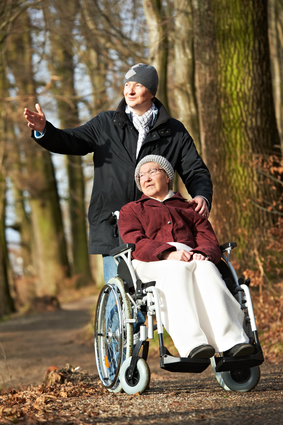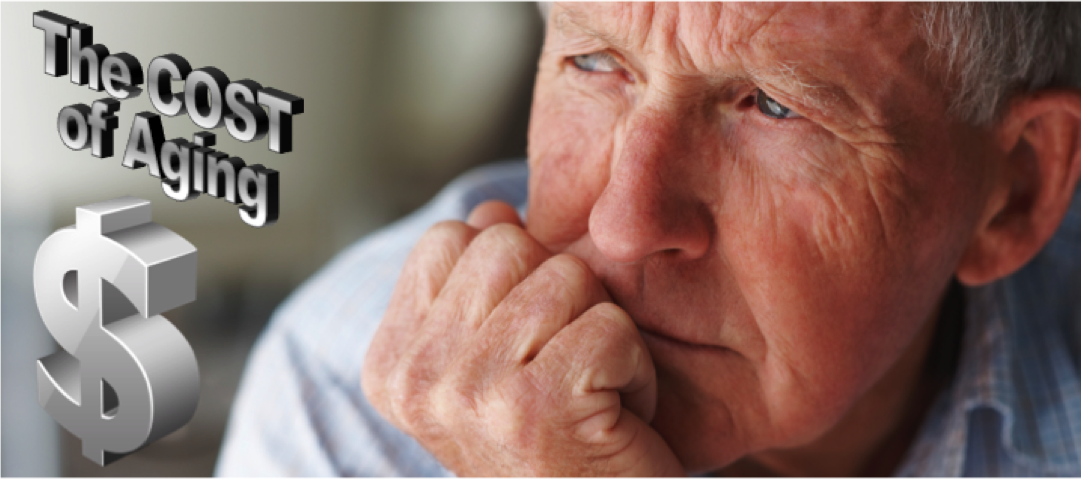A Guide for the Older Caregiver
 According to the Family Caregiver Alliance, a caregiving spouse who is between the ages of 66 and 96 and under excessive mental or emotional strain has a 63 percent greater risk of dying compared to those who are not tasked with caregiving. Family caregivers of all ages are less likely to take care of themselves due to the increased responsibilities and often don’t get enough sleep and exercise, eat poorly, and postpone their own medical appointments. It’s important to remember that taking responsibility for your personal health and well-being will allow you to better take care of your loved one.
According to the Family Caregiver Alliance, a caregiving spouse who is between the ages of 66 and 96 and under excessive mental or emotional strain has a 63 percent greater risk of dying compared to those who are not tasked with caregiving. Family caregivers of all ages are less likely to take care of themselves due to the increased responsibilities and often don’t get enough sleep and exercise, eat poorly, and postpone their own medical appointments. It’s important to remember that taking responsibility for your personal health and well-being will allow you to better take care of your loved one.
If your spouse is contemplating major back surgery, this will entail recovery time you need to be prepared for. If minimally invasive surgery has not yet been considered, it may be an effective alternative. In recent years there have been many advances that have made this a more appealing option for those who have been diagnosed with damaged intervertebral discs, spinal osteoarthritis and other problems that cause back pain. The recovery time for a minimally invasive spine surgery is generally shorter than open-back surgery and is one of its significant advantages. Laser Spine Institute offers some of the latest minimally invasive procedures to patients across the U.S. Visit laserspinelocations.com to determine the nearest location to you and find out if this may be an option that not only helps your spouse find pain relief quicker, but eases the burden on you as well.
No matter what type of procedure your spouse undergoes, following these tips can help make a positive difference during your time as a caregiver.
Preparing your Home Before Surgery
According to the World Health Organization (WHO), falls are the second most common cause of injury deaths across the globe, with adults older than 65 suffering the greatest number of fatal falls.
One of the most important things you can do for your spouse is to make sure your home is safe. Decrease the risk of a fall by:
- Making sure items like medications will be within easy reach of the patient. Having a tool like a “grabber” can allow the patient to reach things independently.
- If you live in a two-story home, consider setting up a temporary space on the first floor for recovery as trips up and down stairs may result in unnecessary trauma.
- Ensuring that handrails in the home are sturdy and in good repair.
- Removing anything that can be easily tripped on such as throw rugs and mats or extension cords.
- Installing nightlights in hallways, bathrooms and the bedroom or sleeping areas.
- Placing non-skid mats in the bathtub or shower. A grab bar next to the toilet or shower may also be necessary.
Assistive Devices
There are all types of assistive devices that can help make your job as a caregiver easier while allowing the patient more independence. The most popular devices are walkers, canes, crutches, wheelchairs and scooters, as well as aids for bathing and toileting.
You’ll find a number of high-tech solutions that can help too, such as smartphone apps that offer medication reminders like RxmindMe. If your spouse is missing interaction with friends or family members who aren’t able to visit, utilizing Skype or other video chat services as well as social media can help. If you aren’t tech savvy, consider checking with your local senior center for how-to classes or asking a grandchild to help.
Take Steps to Manage Stress
Managing your stress as a caregiver is essential for maintaining your good health as well as the health of the patient. Eat a nutritious diet, get plenty of rest and regular exercise, even if it means asking someone else to provide care for a brief period while you’re away.
As isolation can increase stress, it’s important to connect with friends and relatives regularly. Ideally, you should find someone you can confide in when you really need to talk. Don’t forget to include some time to do things you enjoy such as reading, a favorite hobby or going for a walk. If there isn’t anyone around to give you a break, think about respite care or check with your local community to see if there may be a volunteer program.


Related Article:
Aging in America: Stuck in the Middle (video on the caregiver burden from CBS Morning News) … http://www.cbsnews.com/news/aging-in-america-stuck-in-the-middle/
I care for my 86 year old aunt (I’m 59 myself) who lives at home and she got a bad bug at the end of November and we unfortunately couldn’t be there all day with her. We searched around the internet and got her a safeinhome system (www.safeinhome.com) so she can enjoy her independence and we can see if she is OK right from our phones. Such a god-send to see that she is doing well wherever we are..*